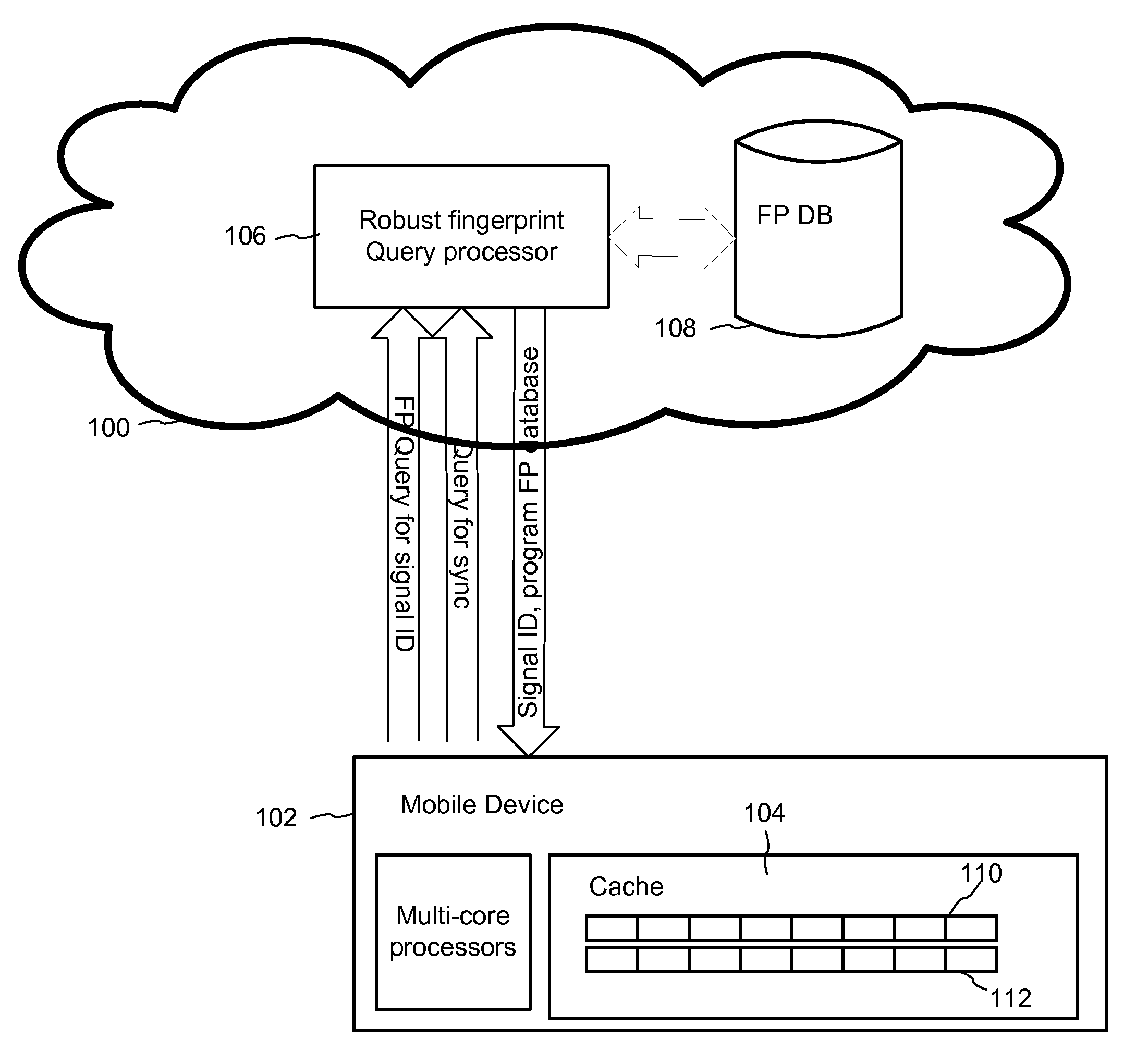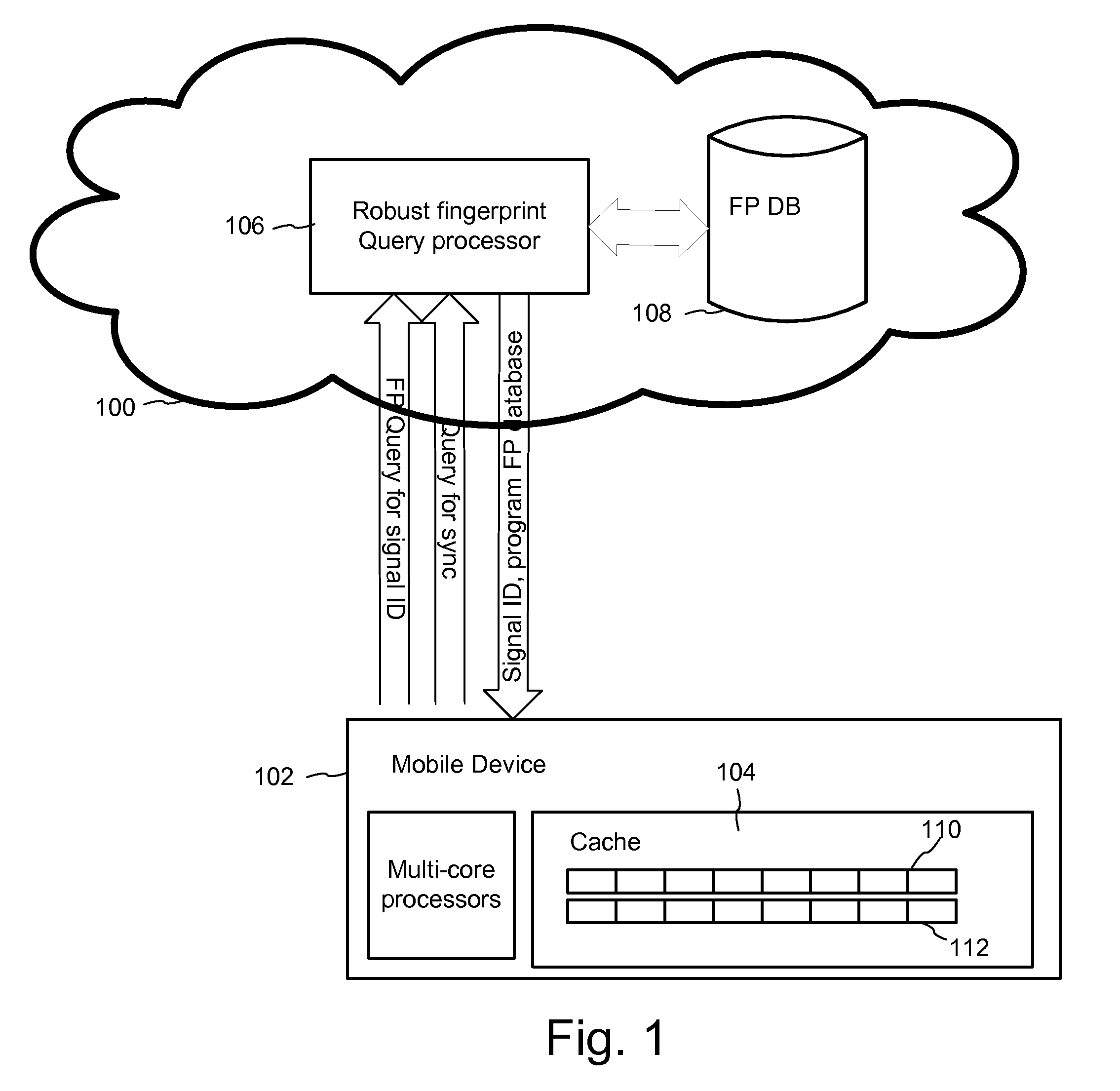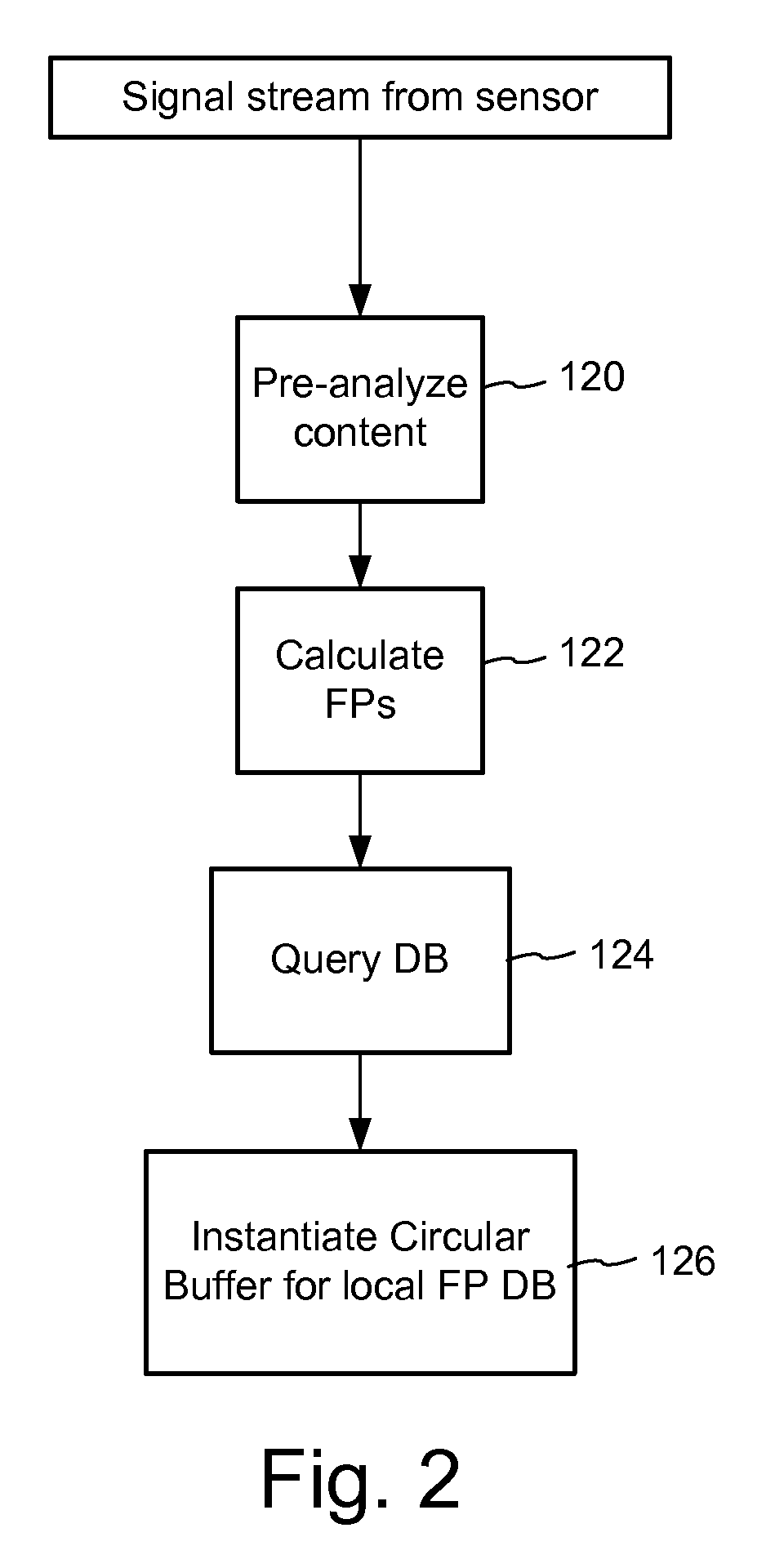Content recognition and synchronization using local caching
a content recognition and local caching technology, applied in the field ofsignal recognition, can solve the problems of limited functionality, limited current recognition applications, and difficult efficient signal recognition and synchronization, and achieve the effect of increasing the popularity of entertainment content for users
- Summary
- Abstract
- Description
- Claims
- Application Information
AI Technical Summary
Benefits of technology
Problems solved by technology
Method used
Image
Examples
Embodiment Construction
[0015]This disclosure provides various content recognition methods for dealing with challenges associated with maintaining accurate and localized recognition while being more flexible and transparent to the user.
[0016]FIG. 1 is a system diagram of a content recognition system with caching of portions of a recognition database on a client device. To simplify the diagram, the system is decomposed into the basic elements of a network computing system 100 (e.g., a network of servers in a cloud computing system) that interacts with a client computing device 102 of the user. The details of the connection between the network system and the user device are not shown, as a myriad of network communication technologies may be used. The predominant one today is a wireless network connection in which the user device opportunistically invokes cellular and wi-fi connectivity to connect to the cloud service, but there are many other possibilities. We foresee that the preferred user device will be a...
PUM
 Login to View More
Login to View More Abstract
Description
Claims
Application Information
 Login to View More
Login to View More - R&D
- Intellectual Property
- Life Sciences
- Materials
- Tech Scout
- Unparalleled Data Quality
- Higher Quality Content
- 60% Fewer Hallucinations
Browse by: Latest US Patents, China's latest patents, Technical Efficacy Thesaurus, Application Domain, Technology Topic, Popular Technical Reports.
© 2025 PatSnap. All rights reserved.Legal|Privacy policy|Modern Slavery Act Transparency Statement|Sitemap|About US| Contact US: help@patsnap.com



